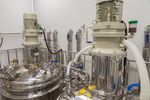In simple terms: a gas detector monitors the ambient atmosphere, often measuring concentration of one or more gases, and triggers an alert or action when thresholds are exceeded. The goal is early warning so corrective measures (ventilation, evacuation, shutdown) can take place before serious harm occurs.

Importance
Why do gas detectors matter today?
-
They protect human life: Many gases are colourless, odourless or present at dangerous levels before obvious symptoms appear. Devices can alert workers or occupants in time.
-
They prevent property damage and disasters: Leaks of flammable or explosive gases can lead to fires, explosions or large-scale incidents. Early detection can mitigate those risks.
-
They ensure environmental safety: Gas leaks may also mean environmental release of toxic or greenhouse gases, so detection contributes to broader public safety and compliance.
-
They apply across many settings: from industrial plants (oil & gas, petrochemical, manufacturing) to mines, underground tunnels, warehouses, and even residential or commercial buildings.
-
They help solve specific problems: such as oxygen depletion (e.g., in confined spaces), toxic gas accumulation (e.g., hydrogen sulphide, carbon monoxide), and flammable gas build-up (e.g., methane, propane) that pose invisible threats.
Who does this affect? Workers in hazardous or enclosed environments, plant managers, safety officers, building occupants, regulatory auditors, and supply-chain stakeholders in industries handling gases or volatile materials.
Recent Updates
Several trends and changes have emerged in recent years:
-
Smart & connected systems: According to a 26 Aug 2025 article, mobile and fixed gas detectors are increasingly part of networked systems, enabling remote monitoring, alarm coordination and improved response capability.
-
Sensor technology advancements: Reviews published in 2024/2025 highlight the development of “smart gas sensors” leveraging wireless communication, IoT & AI for multifunctional monitoring, early warning and automatic analysis.
-
Market growth: The global gas detector market is growing steadily. For example, the portable gas detector market projected a compound annual growth rate (CAGR) around 5 % from 2024–2031.
-
Rise of multi-gas detection and integration: More systems now detect multiple gases (toxic + flammable + oxygen) simultaneously, and integrate with building or process control systems for automated safety responses.
Regulatory pressure and standards updates: With stricter safety norms in many countries, demand is rising for detectors certified for hazardous or explosive atmospheres.
Thus, the field is moving from simple alarms to smarter, networked, data-driven systems with broader sensors, greater connectivity and regulatory alignment.
Laws or Policies
Gas detector use is heavily influenced by regulations and standards. Some examples:
-
In India, the standard IS/IEC 60079‑29‑2 (2007) covers “Selection, Installation, Use and Maintenance of Detectors for Flammable Gases and Oxygen”.
-
The Directorate General of Mines Safety (DGMS) in India issued circulars (e.g., Tech. Circular No. 5 of 2020) specifying portable gas detectors or explosimeters must be provided and maintained at driller’s stand etc.
-
In industrial applications, controllers and detection units must meet explosion-protection and workplace health & safety standards (e.g., see product controllers from MSA alluding to compliance for gas detection systems--supporting global safety standards.
-
Certification and approval for use in explosive atmospheres (such as ATEX for Europe) also apply in India: e.g., ATEX certification for gas detectors in explosive atmospheres.
Key takeaway: If one is installing or using gas detectors, it must be in accordance with relevant national/international standards, and depending on the industry (e.g., mining, petrochemical) additional regulatory mandates apply.
Tools and Resources
Here are some useful tools, websites and resources related to gas detection:
-
Standards libraries: e.g., for IS/IEC 60079-29-2 (India) and other IEC/ATEX standards for explosive atmospheres.
-
Industry articles/reports: e.g., market trend reports (portable gas detector market, smart gas sensors) for latest technological context.
-
Equipment manufacturers’ documentation: e.g., controller modules (signal processors, alarm interfaces) that show integration with safety systems.
-
Online calculators or check-lists: For example, risk-assessment templates to calculate safe exposure limits (e.g., parts per million [ppm], lower explosive limit [LEL], oxygen deficiency).
-
Safety management portals: Websites of regulatory bodies (DGMS India, OSHA USA) that outline requirements and guidance on gas-detection in workplaces.
-
Training modules/webinars: Many safety-training organizations provide modules on confined-space entry, gas detection practice, calibration, response protocols.
Quick reference table:
| Resource Type | Use Case |
|---|
| Standards (IS/IEC, ATEX, IEC) | Ensure device selection/installation compliance |
| Market/tech reports | Understand current trends and upcoming features |
| Manufacturer documentation | Choose devices, understand sensor types & interfaces |
| Risk assessment check-lists/calculators | Evaluate hazard scenarios, ventilation needs |
| Regulatory body websites | Confirm legal obligations for the specific industry |
| Training modules | Prepare personnel for correct use and response |
FAQs
Q1: What types of gases can gas detectors sense?
A: Gas detectors may be designed to sense:
-
Flammable gases or vapours (e.g., methane, propane) often measured as % LEL (lower explosive limit).
-
Toxic gases (e.g., hydrogen sulphide, carbon monoxide) often measured in ppm (parts per million).
-
Oxygen levels (to detect deficiency or enrichment).
Some detectors are single-gas (just one target) and others are multi-gas (multiple targets + oxygen).
Q2: How often should a gas detector be maintained or calibrated?
A: While specific intervals depend on manufacturer and regulatory requirements, best practice involves periodic calibration, bump tests and maintenance to ensure accuracy. Newer smart models with auto-calibration features are emerging.
Q3: Can gas detectors be used for home/residential settings?
A: Yes, there are detectors for residential use targeting natural gas, LPG or carbon monoxide. However, industrial-grade multi-gas detectors used in factories have higher specification and certifications. For home use, check certified alarms and device suitability for the specific hazard.
Q4: What are the major differences between portable and fixed gas detectors?
A: Portable detectors are wearable or handheld, used by workers in the field, on moves, in confined spaces. Fixed detectors are permanently installed in strategic locations in a facility to monitor continuously. Market data shows portable detectors are a fast-growing segment.
Q5: What factors should be considered when selecting a gas detection system?
A: Key factors include:
-
Target gases (flammable, toxic, oxygen) and expected concentration ranges
-
Detection method/sensor type (electrochemical, catalytic bead, infrared, photoionisation)
-
Certification/legal compliance for the environment (explosive atmospheres, mining, manufacturing)
-
Response time, alarm settings, connectivity (e.g., remote monitoring, data logging)
-
Maintenance/calibration requirements and integration with safety systems (alarms, ventilation control)
Sensor drift, cross-sensitivity, and environmental conditions (temperature, humidity) also matter.
Conclusion
Gas detectors play a critical role in safeguarding people, property and the environment from invisible hazards posed by gases—flammable, toxic or oxygen-deficient. With technological advances (smart sensors, connectivity, data analytics) and evolving regulatory landscapes, these systems are becoming more effective and integrated than ever. Whether used in industrial plants, confined workspaces or residential settings, the key principles remain the same: correct selection, installation, maintenance and compliance with standards. Staying informed about current trends, regulations and tools ensures that gas detection remains a reliable pillar of safety managemen








